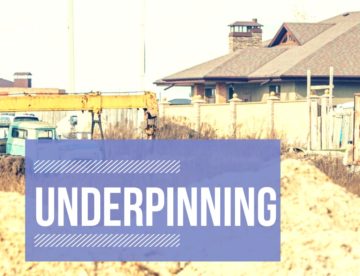Helical Pile
Helical Pile Manufacturing Helical Anchors Inc. is a leading Helical Pile company located at Minneapolis, Minnesota. We have the technology …
Helical Anchors Manufacturing

Helical Anchors Manufacturing
Helical Anchors Inc. is centrally located in Minneapolis, Minnesota. We are the only helical pile manufacturer that offers inertia welded …
We provide the strongest helical piles, ground screws, brackets, leads, extension, and underpinning for the Industrial sector. The industrial sector …
Residential Helical Piles Solutions from Helical Anchors Inc. We provide soil foundation solutions for the homeowners. Residential Sector would require …
Commercial helical piles We provide the strongest commercial Helical Piles, Ground Screws, Brackets, Leads, Extension and Underpinning for Commercial Sector …
Helical Anchor Products Helical Anchors Inc. provides the strongest quality products for soil stabilization and earth foundation solutions. Benefits of …

Helical Pile Manufacturing Helical Anchors Inc. is a leading Helical Pile company located at Minneapolis, Minnesota. We have the technology …

Helical Piers Manufacturing Helical Anchors Inc. is a leading Helical Piers Manufacturing unit located at Minneapolis, Minnesota. We have the …

Helical Anchors Helical Anchors Inc. is a leading helical anchor manufacturer unit located at Minneapolis, Minnesota. We have the …

Screw piles, sometimes referred to as screw anchors, screw–piles, residential screw piles, and helical anchors are a steel screw-in piling and ground anchoring system used for building deep …

Underpinning is the process of strengthening the foundation of an existing building or other structure. Underpinning For foundation remediation we …

A tieback is a horizontal rod used to reinforce retaining walls for stability. With one end of the tieback secured to the wall, the …
We at Helical Anchors Inc. believe in innovation, quality, and design for products. Our Helical pier manufacturing can help you …

Innovation means a new method or idea with the intent to improve the old norm and our drive to innovate …

Helical Anchors Inc brings “new” solutions to the soil stabilization and foundation industry. We apply state of the art technology …

Helical Anchors Inc has the ability to custom helical pile design for your deep foundation project and an expert with …

Helical Piles Consulting |No Need to worry about the correct Helical Piles for your foundations. Consult now with Helical Piles …

Helical Anchors Inc has a great network of installers all across the United States that can assist you in your …

Helical Pile Manufacturer Helical Anchors Inc is proud helical pile manufacturer, We build the strongest helical products for soil stabilization …
Helical Anchors, Inc. 5101 Boone Ave. Minneapolis, MN 55428 P: 763-201-6552 • F: 763-536-9102 Ryan Dungan – Sales and Marketing Manager Ryan@helicalanchorsinc.com …